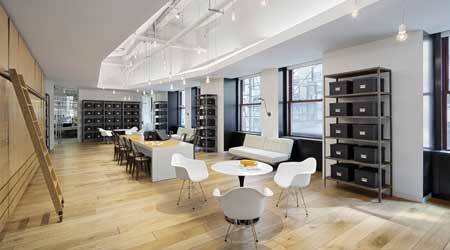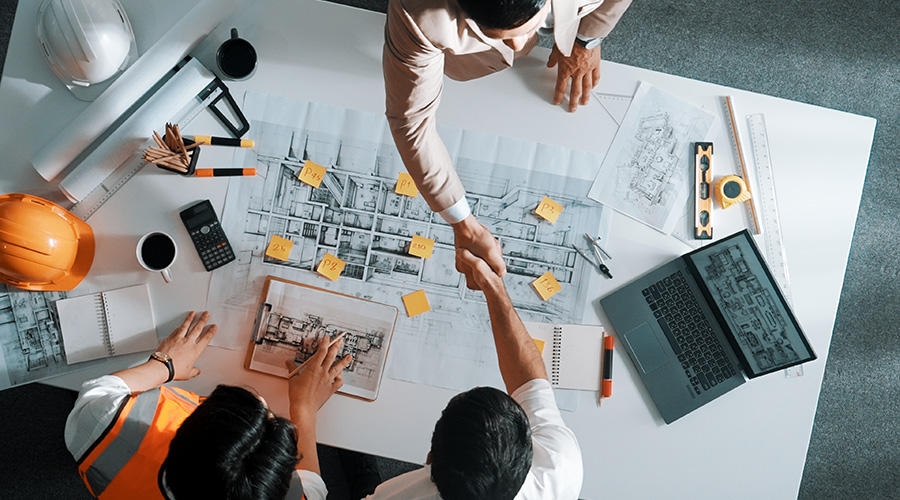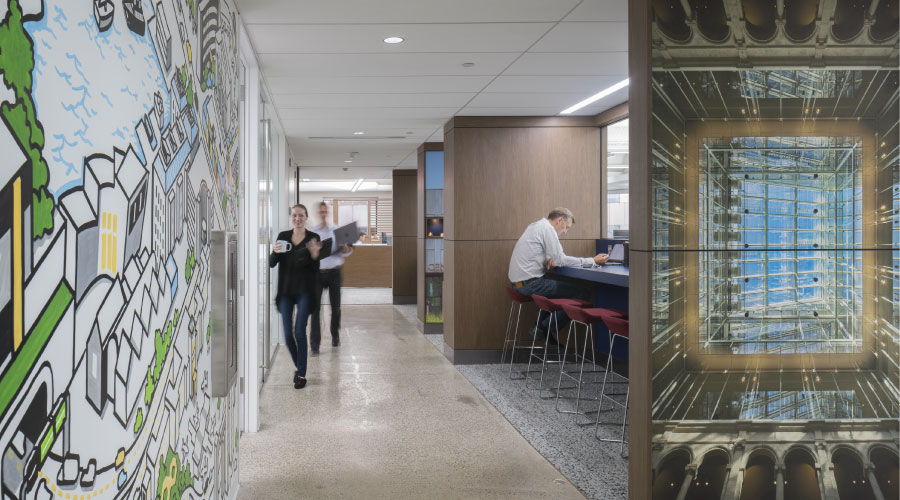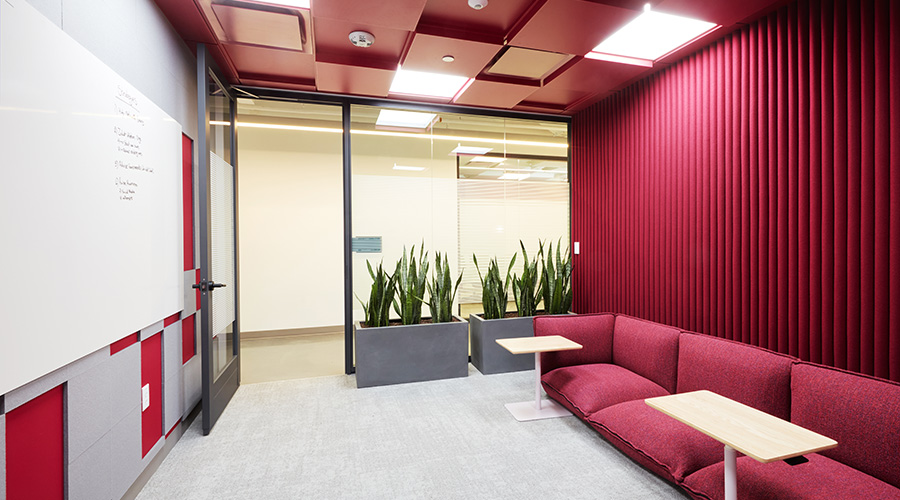 At Global Brands Group, an apparel company, collaboration space supports a variety of small group settings — a valuable trait in the high-performance office.Paúl Rivera, courtesy Spacesmith
At Global Brands Group, an apparel company, collaboration space supports a variety of small group settings — a valuable trait in the high-performance office.Paúl Rivera, courtesy SpacesmithAllow New Workspaces To Evolve Gradually
As a first step toward change, get a good sense of the current office layout, and how it's being used.
While in the past there have been dramatic shifts in the way office space is designed for performance, it’s anticipated that the current moment will be shaped more through continuous and more gradual iterations. This is a good thing for facility managers. Instead of throwing the old idea out and ushering the new idea in, facility managers can identify specific components, test new strategies, and evolve the workplace gradually, says Joseph White, director of workplace strategy at Herman Miller.
“It’s so rare that we can start from scratch and build a new environment, but what we can do is start to identify aspects within the current workplace system that aren’t performing as high as some of the others and identify them as ways to test new concepts,” he says.
One place to start is to get a sense of how the current office layout is actually being used, says Denny Crain, architect with Remiger Design. As more employees have flexible work solutions, the need for a dedicated desk declines significantly. However, the desk might still be sitting in the space, wasting valuable square footage. A lot of the time the workstations are too large or there are too many of them for the actual tasks being completed in the space, he says. Once the workstations are right-sized, a floorplate might gain as much as 25 percent of usable space, which can be applied to other functions such as improving connection space or to absorb growth.
To get a sense of the daily tasks the space needs to support, Crain recommends speaking with each department head. They know who is there 100 percent, 60 percent, or 20 percent of the time, for example.
Talking directly with departments such as IT and HR is also important to get a good sense of organizational goals. However, when talking to different people in the company about workspace, White cautions facility managers to keep the conversation on the activities performed in the space and what the goal of the work is. From there, facility managers can look at how the space relates to those goals and better shape it to meet those needs. Asking individuals what they want or what they like is a lost cause. Don’t ask if a room is good or bad. Focus instead on whether individuals feel successful in completing a specific task or not, and then figure out the why. “I have found it’s more successful to have a conversation around activities and then move to space, rather than space then to activity,” White says. “It’s all about starting with people first.”
Email comments and questions to naomi.millan@tradepress.com.
Related Topics:
















